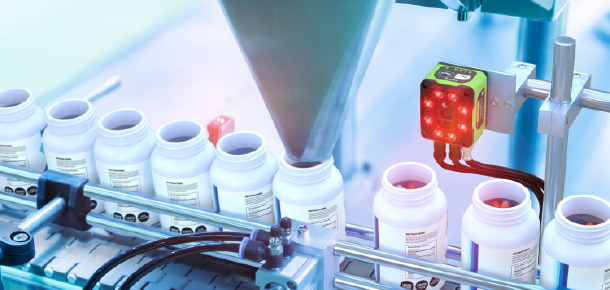
Manufacturers and logistics operations have numerous applications for optical character recognition (OCR), and they’ve been using technology to automate data capture for decades. From reading dot-matrix production codes and expiration dates as products move through production and packaging to scanning serial numbers for track-and-trace applications, OCR technology can improve productivity, accuracy and compliance.
But a widespread need for a technology solution doesn’t guarantee that the tech is easy or efficient to implement, even when it has been used for many years.
The Problem with Standard OCR Solutions
In fact, conventional OCR solutions often require tedious, time-consuming setup processes that train the system to decode specific font sets. Configuring a solution to read one or two particular fonts is standard procedure. But training the system to recognize and decode “variations” that result from inconsistent printing, confusing backgrounds, low contrast or other problems can create decoding challenges.
Everyone is familiar with product labels with dot-matrix text that’s been stretched, compressed, skewed or distorted as the product or label passed under the printhead. Well, in most conventional OCR systems, each of those variations is basically a different font. For an OCR system to work, it must be trained to read the stretched-out, compressed and skewed characters as unique fonts. That’s a time-consuming, character-by-character process.
But what if we use a type of Artificial Intelligence (AI) known as Deep Learning to reduce the training time required for OCR setup? Could we create an OCR system that can learn to decipher font variations with little or no outside intervention?
Zebra Aurora Deep Learning OCR Software
The answer is yes, with Aurora Deep Learning OCR software tool for Zebra machine vision solutions.
Zebra Aurora is the unified software platform that simplifies the deployment of Zebra’s fixed industrial scanners and machine vision cameras. Last year, Zebra extended the Aurora toolset with additional software tools acquired from Adaptive Vision. Aurora Deep Learning OCR is one of those tools.
To put it simply, deep learning is a type of machine learning that learns and progressively improves as it encounters complex data sets. Essentially, Deep Learning technology enables a system to learn as it works, gaining new capabilities without extensive manual training.
That makes Aurora Deep Learning a perfect solution to common OCR challenges.
What Makes Aurora Different
Now, instead of manually training a system to recognize and decode every possible font variation, users simply draw a box around the target area of an image in the Zebra Aurora software and let the technology go to work. As it encounters distorted, irregular or hard-to-read characters, the system refines its algorithm based on neural networks that are optimized for industrial vision systems. Font training becomes unnecessary, as the system teaches itself to deliver accurate reads without being programmed to recognize numerous different fonts.
The beauty of Zebra Aurora is that, while its deep learning OCR is genuinely cutting-edge technology, even novice users with no coding or programming expertise can deploy it and set up highly accurate, flexible and adaptive OCR applications quickly and easily.
